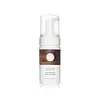What's inside
What's inside
 Key Ingredients
Key Ingredients

No key ingredients
 Benefits
Benefits

 Concerns
Concerns

 Ingredients Side-by-side
Ingredients Side-by-side

Water
Skin ConditioningGlycerin
HumectantPropylene Glycol
HumectantTea-Cocoyl Alaninate
CleansingTrehalose
HumectantCocamidopropyl Betaine
CleansingSodium Lauroyl Sarcosinate
CleansingButylene Glycol
HumectantDisodium Cocoyl Glutamate
CleansingPanthenol
Skin ConditioningSodium Cocoyl Glutamate
CleansingChlorphenesin
AntimicrobialOryza Sativa Extract
AbsorbentPhenoxyethanol
PreservativeOryza Sativa Bran Extract
Skin ConditioningO-Cymen-5-Ol
AntimicrobialWater
Skin ConditioningCoco-Glucoside
CleansingGlycerin
HumectantCaprylyl/Capryl Glucoside
CleansingGlyceryl Oleate
EmollientDisodium Cocoyl Glutamate
CleansingPanthenol
Skin ConditioningPhenoxyethanol
PreservativeCitric Acid
BufferingSodium Citrate
BufferingSodium Cocoyl Glutamate
CleansingParfum
MaskingButylene Glycol
HumectantPanax Ginseng Root Extract
EmollientEthylhexylglycerin
Skin ConditioningXanthan Gum
EmulsifyingMaltodextrin
AbsorbentMoringa Oleifera Seed Extract
Skin ConditioningPantolactone
HumectantWater, Coco-Glucoside, Glycerin, Caprylyl/Capryl Glucoside, Glyceryl Oleate, Disodium Cocoyl Glutamate, Panthenol, Phenoxyethanol, Citric Acid, Sodium Citrate, Sodium Cocoyl Glutamate, Parfum, Butylene Glycol, Panax Ginseng Root Extract, Ethylhexylglycerin, Xanthan Gum, Maltodextrin, Moringa Oleifera Seed Extract, Pantolactone
Ingredients Explained
These ingredients are found in both products.
Ingredients higher up in an ingredient list are typically present in a larger amount.
Butylene Glycol (or BG) is used within cosmetic products for a few different reasons:
Overall, Butylene Glycol is a safe and well-rounded ingredient that works well with other ingredients.
Though this ingredient works well with most skin types, some people with sensitive skin may experience a reaction such as allergic rashes, closed comedones, or itchiness.
Learn more about Butylene GlycolWe don't have a description for Disodium Cocoyl Glutamate yet.
Glycerin is already naturally found in your skin. It helps moisturize and protect your skin.
A study from 2016 found glycerin to be more effective as a humectant than AHAs and hyaluronic acid.
As a humectant, it helps the skin stay hydrated by pulling moisture to your skin. The low molecular weight of glycerin allows it to pull moisture into the deeper layers of your skin.
Hydrated skin improves your skin barrier; Your skin barrier helps protect against irritants and bacteria.
Glycerin has also been found to have antimicrobial and antiviral properties. Due to these properties, glycerin is often used in wound and burn treatments.
In cosmetics, glycerin is usually derived from plants such as soybean or palm. However, it can also be sourced from animals, such as tallow or animal fat.
This ingredient is organic, colorless, odorless, and non-toxic.
Glycerin is the name for this ingredient in American English. British English uses Glycerol/Glycerine.
Learn more about GlycerinPanthenol is a common ingredient that helps hydrate and soothe the skin. It is found naturally in our skin and hair.
There are two forms of panthenol: D and L.
D-panthenol is also known as dexpanthenol. Most cosmetics use dexpanthenol or a mixture of D and L-panthenol.
Panthenol is famous due to its ability to go deeper into the skin's layers. Using this ingredient has numerous pros (and no cons):
Like hyaluronic acid, panthenol is a humectant. Humectants are able to bind and hold large amounts of water to keep skin hydrated.
This ingredient works well for wound healing. It works by increasing tissue in the wound and helps close open wounds.
Once oxidized, panthenol converts to pantothenic acid. Panthothenic acid is found in all living cells.
This ingredient is also referred to as pro-vitamin B5.
Learn more about PanthenolPhenoxyethanol is a preservative that has germicide, antimicrobial, and aromatic properties. Studies show that phenoxyethanol can prevent microbial growth. By itself, it has a scent that is similar to that of a rose.
It's often used in formulations along with Caprylyl Glycol to preserve the shelf life of products.
Sodium Cocoyl Glutamate is a gentle cleanser and surfactant. It is the sodium salt of the Cocoyl Glutamic Acid and comes from coconut oil. As a surfactant, it helps lift dirt and oil to be washed away.
Sodium Cocoyl Glutamate also has an emolliating effect and can help leave the skin feeling soft.
Water. It's the most common cosmetic ingredient of all. You'll usually see it at the top of ingredient lists, meaning that it makes up the largest part of the product.
So why is it so popular? Water most often acts as a solvent - this means that it helps dissolve other ingredients into the formulation.
You'll also recognize water as that liquid we all need to stay alive. If you see this, drink a glass of water. Stay hydrated!
Learn more about Water